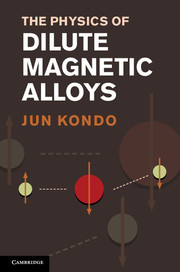2 - Molecules
Published online by Cambridge University Press: 05 March 2013
Summary
We consider the H2 molecule. We introduce the molecular orbitals from the viewpoint of mean-field approximation, and these are classified into bonding and antibonding orbitals. We discuss the molecular bonds also from the Heitler-London viewpoint, which is based on atomic orbitals. In both of these cases, the state with zero total spin, or the spin singlet state, is found to form a stable molecule. We discuss the relationship between the two viewpoints, and introduce the configuration interaction as an improvement to both. In order to facilitate the treatment of complex molecules, a model is proposed, and a second-quantization procedure which is convenient for its description is introduced.
The H+2 molecule
Let us, in this chapter, define the molecule as a system that consists of more than one nucleus and one or more electrons. Its wavefunction is a function of the coordinates of the nuclei and the electrons. An intuitive picture is as follows. Electrons are lighter by far than nuclei and are moving around fast. It is therefore reasonable to consider the nuclei as being instantaneously fixed, and to solve for the wavefunction of the electrons. The wavefunction and energy thus obtained are functions of the positions of the nuclei, and the energy can be considered to play the role of the potential energy with respect to the motion of the nuclei. This approximation is called the adiabatic approximation, or the Born-Oppenheimer approximation, and is valid when the ratio m/M of the masses of the electron and the nuclei is sufficiently small.
- Type
- Chapter
- Information
- The Physics of Dilute Magnetic Alloys , pp. 16 - 31Publisher: Cambridge University PressPrint publication year: 2012



